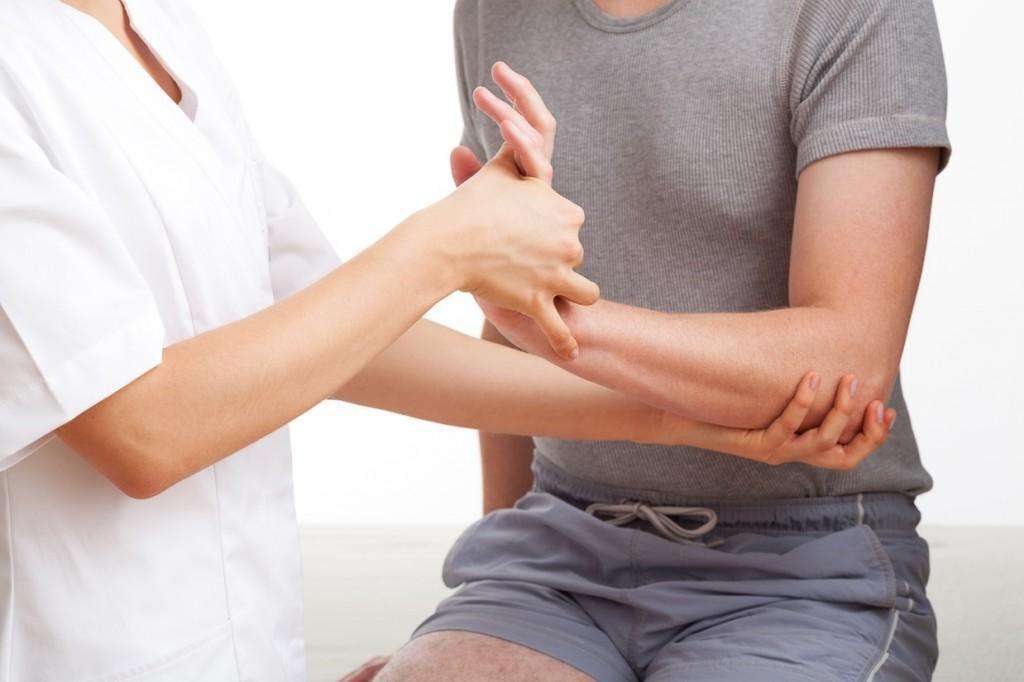Though bowling is a low-impact sport that’s safe for many ages and ability levels, injuries can happen. Typically, bowling injuries are caused by overuse of muscles, as the repetitive nature of the sport can cause stress to tendons and ligaments, and result in sprains and strains. Injury is also caused by improper use of bowling alley equipment. Common bowling injuries include:
- Thumb Sprains: Overuse of finger grips on a bowling ball can cause injury to the thumb, such as pain and swelling over the base of the joint, pain on movement, and pain in the webbing between the thumb and the forefinger. Severe cases, like extreme injuries such as “bowler’s thumb,” or “mechanical bull thumb,” may require surgical intervention.
- Biceps Tendinopathy: This term describes a variety of injuries that can happen in the tendons of the bicep region. Repeated swinging and rolling of the ball can lead to pain and discomfort in the area.
- Shoulder Injuries: Similar to the biceps, a bowler’s shoulder goes through several movements over the course of a game. During the approach to the lane and before delivery of the ball, abduction, posterior flexion, and external rotation occur. When the ball is released, there is forceful adduction with forward flexion and internal rotation, followed by the arm sweeping across the chest. This set of actions can cause shoulder joint ligaments tears and impingement syndromes (involving tendons of the rotator cuff or biceps).
- Carpal Tunnel Syndrome: Commonly known as an injury that afflicts computer users, carpal tunnel syndrome can also happen to bowlers. If you feel tingling and numbness with pain or weakness over the hand, fingers, or wrist, see a physician as soon as possible for diagnosis.
- Knee Ligament Injuries: Sudden change in direction during the approach to the lane can lead to injuries to the knee joint, especially the ligaments in the leg (the cruciates, the menisci or the collaterals). Common symptoms include pain, bruising, swelling, and instability of the joint. Healing may require between four and twelve weeks, or longer if surgical reconstruction is required.
- Lower Back: Bowling injuries that affect the lower back are typically due to improper technique, like sudden stretching, or stiffened muscles from muscle fatigue.
To reduce the overall incidence of bowling injuries, use proper stretching and correctly-fitted equipment, and follow the helpful tips below:
- Stretching: Before each game, perform stretches with specific emphasis on the muscles used in bowling, like the shoulders, quadriceps, hamstrings, and lower back.
- Warm-Ups: 10 to 20 minutes before the game, incorporate light cardio work or calisthenics as part of your stretching regimen.
- Strength and Conditioning: Frequent bowlers may want to consider implementing a fitness routine for improving core strength, such as finger and wrist strength, as well as muscles specific to bowling (shoulders, forearm, quadriceps, and hamstrings).
For more tips and tricks to improve your game, visit the experts at Murrey Bowling. Murrey Bowling offers world-class bowling equipment and in-home bowling alley installations to meet a variety of needs. For more info, please call Murrey Bowling at (310) 532-6091.


